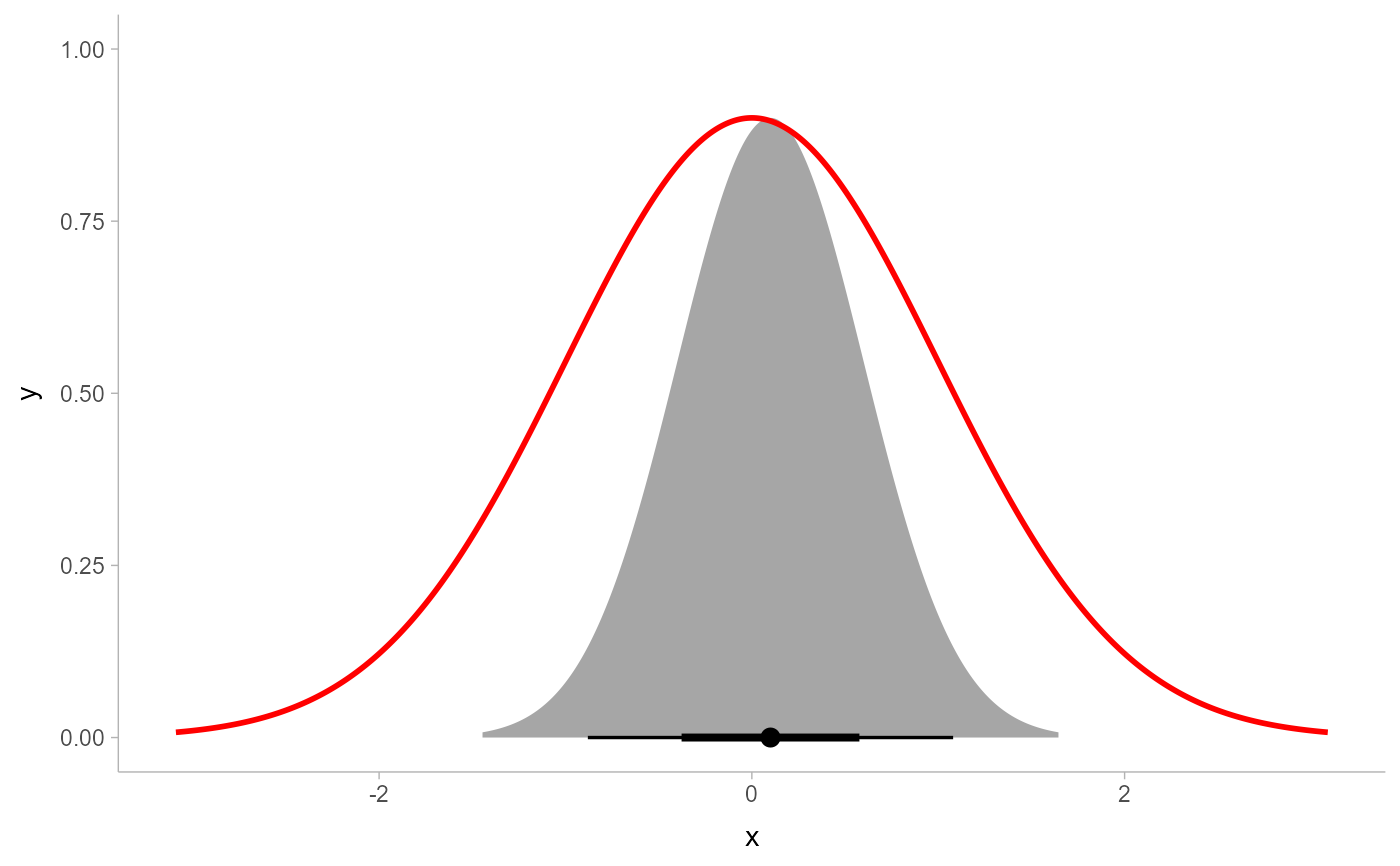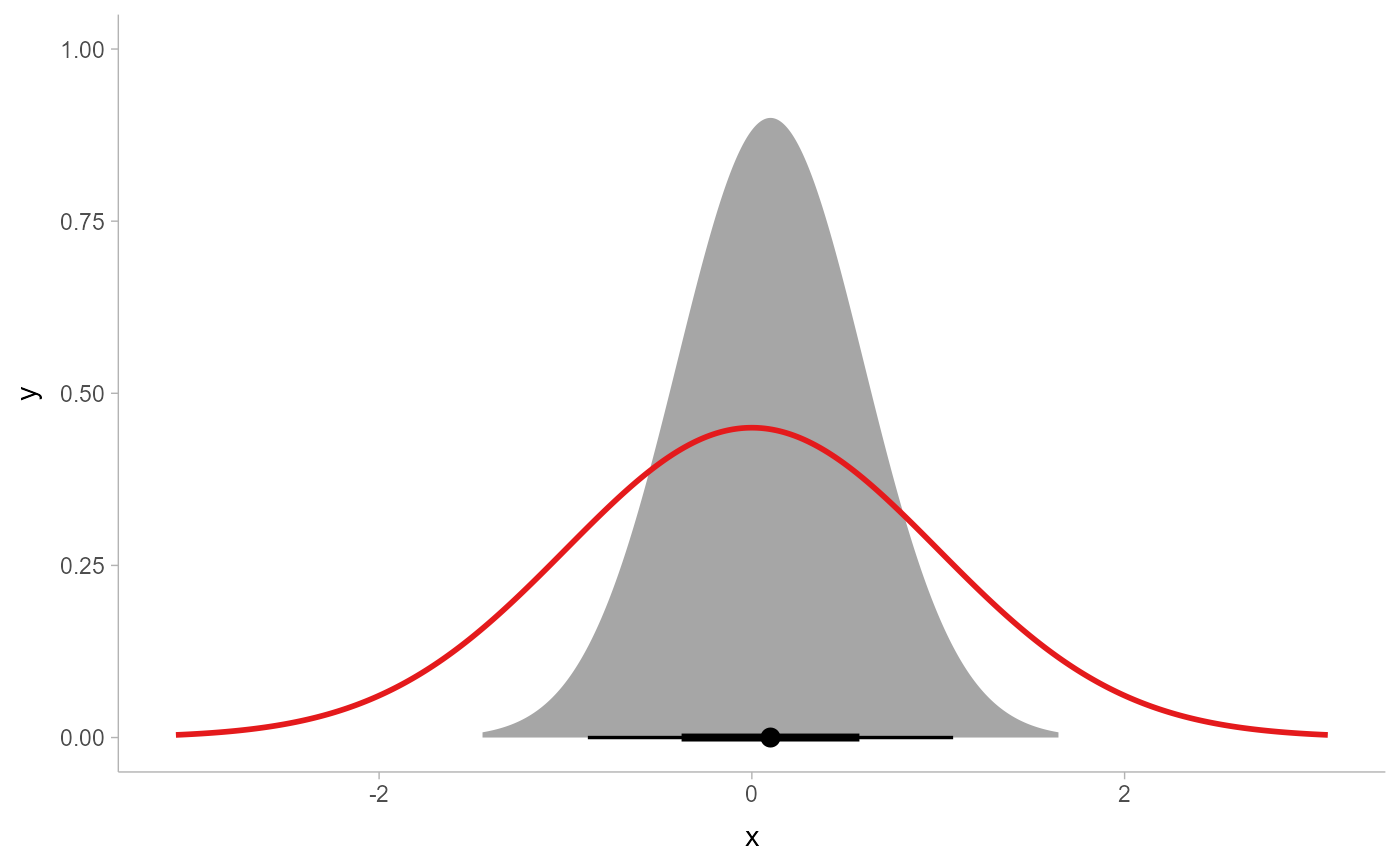This ggplot2 scale linearly scales all thickness values of geoms
that support the thickness aesthetic (such as geom_slabinterval()). It
can be used to align the thickness scales across multiple geoms (by default,
thickness is normalized on a per-geom level instead of as a global scale).
For a comprehensive discussion and examples of slab scaling and normalization,
see the thickness scale article.
Arguments
- name
The name of the scale. Used as the axis or legend title. If
waiver(), the default, the name of the scale is taken from the first mapping used for that aesthetic. IfNULL, the legend title will be omitted.- breaks
One of:
NULLfor no breakswaiver()for the default breaks computed by the transformation objectA numeric vector of positions
A function that takes the limits as input and returns breaks as output (e.g., a function returned by
scales::extended_breaks()). Note that for position scales, limits are provided after scale expansion. Also accepts rlang lambda function notation.
- labels
One of the options below. Please note that when
labelsis a vector, it is highly recommended to also set thebreaksargument as a vector to protect against unintended mismatches.NULLfor no labelswaiver()for the default labels computed by the transformation objectA character vector giving labels (must be same length as
breaks)An expression vector (must be the same length as breaks). See ?plotmath for details.
A function that takes the breaks as input and returns labels as output. Also accepts rlang lambda function notation.
- limits
One of:
NULLto use the default scale rangeA numeric vector of length two providing limits of the scale. Use
NAto refer to the existing minimum or maximumA function that accepts the existing (automatic) limits and returns new limits. Also accepts rlang lambda function notation. Note that setting limits on positional scales will remove data outside of the limits. If the purpose is to zoom, use the limit argument in the coordinate system (see
coord_cartesian()).
- renormalize
<scalar logical> When mapping values to the
thicknessscale, should those values be allowed to be renormalized by geoms (e.g. via thenormalizeparameter togeom_slabinterval())? The default isFALSE: ifscale_thickness_shared()is in use, the geom-specificnormalizeparameter is ignored (this is achieved by flagging values as already normalized by wrapping them inthickness()). Set this toTRUEto allow geoms to also apply their own normalization. Note that if you set renormalize toTRUE, subguides created via thesubguideparameter togeom_slabinterval()will display the scaled values output by this scale, not the original data values.- oob
One of:
Function that handles limits outside of the scale limits (out of bounds). Also accepts rlang lambda function notation.
The default (
scales::censor()) replaces out of bounds values withNA.scales::squish()for squishing out of bounds values into range.scales::squish_infinite()for squishing infinite values into range.
- guide
A function used to create a guide or its name. See
guides()for more information.- expand
<numeric> Vector of limit expansion constants of length 2 or 4, following the same format used by the
expandargument ofcontinuous_scale(). The default is not to expand the limits. You can use the convenience functionexpansion()to generate the expansion values; expanding the lower limit is usually not recommended (because with mostthicknessscales the lower limit is the baseline and represents0), so a typical usage might be something likeexpand = expansion(c(0, 0.05))to expand the top end of the scale by 5%.- ...
Arguments passed on to
ggplot2::continuous_scaleaestheticsThe names of the aesthetics that this scale works with.
scale_nameThe name of the scale that should be used for error messages associated with this scale.
paletteA palette function that when called with a numeric vector with values between 0 and 1 returns the corresponding output values (e.g.,
scales::pal_area()).minor_breaksOne of:
NULLfor no minor breakswaiver()for the default breaks (none for discrete, one minor break between each major break for continuous)A numeric vector of positions
A function that given the limits returns a vector of minor breaks. Also accepts rlang lambda function notation. When the function has two arguments, it will be given the limits and major break positions.
n.breaksAn integer guiding the number of major breaks. The algorithm may choose a slightly different number to ensure nice break labels. Will only have an effect if
breaks = waiver(). UseNULLto use the default number of breaks given by the transformation.rescalerA function used to scale the input values to the range [0, 1]. This is always
scales::rescale(), except for diverging and n colour gradients (i.e.,scale_colour_gradient2(),scale_colour_gradientn()). Therescaleris ignored by position scales, which always usescales::rescale(). Also accepts rlang lambda function notation.na.valueMissing values will be replaced with this value.
transformFor continuous scales, the name of a transformation object or the object itself. Built-in transformations include "asn", "atanh", "boxcox", "date", "exp", "hms", "identity", "log", "log10", "log1p", "log2", "logit", "modulus", "probability", "probit", "pseudo_log", "reciprocal", "reverse", "sqrt" and "time".
A transformation object bundles together a transform, its inverse, and methods for generating breaks and labels. Transformation objects are defined in the scales package, and are called
transform_<name>. If transformations require arguments, you can call them from the scales package, e.g.scales::transform_boxcox(p = 2). You can create your own transformation withscales::new_transform().transpositionFor position scales, The position of the axis.
leftorrightfor y axes,toporbottomfor x axes.callThe
callused to construct the scale for reporting messages.superThe super class to use for the constructed scale
Value
A ggplot2::Scale representing a scale for the thickness
aesthetic for ggdist geoms. Can be added to a ggplot() object.
Details
By default, normalization/scaling of slab thicknesses is controlled by geometries,
not by a ggplot2 scale function. This allows various functionality not
otherwise possible, such as (1) allowing different geometries to have different
thickness scales and (2) allowing the user to control at what level of aggregation
(panels, groups, the entire plot, etc) thickness scaling is done via the normalize
parameter to geom_slabinterval().
However, this default approach has one drawback: two different geoms will always
have their own scaling of thickness. scale_thickness_shared() offers an
alternative approach: when added to a chart, all geoms will use the same
thickness scale, and geom-level normalization (via their normalize parameters)
is ignored. This is achieved by "marking" thickness values as already
normalized by wrapping them in the thickness() data type (this can be
disabled by setting renormalize = TRUE).
Note: while a slightly more typical name for scale_thickness_shared() might
be scale_thickness_continuous(), the latter name would cause this scale
to be applied to all thickness aesthetics by default according to the rules
ggplot2 uses to find default scales. Thus, to retain the usual behavior
of stat_slabinterval() (per-geom normalization of thickness), this scale
is called scale_thickness_shared().
See also
The thickness datatype.
The thickness aesthetic of geom_slabinterval().
subscale_thickness(), for setting a thickness sub-scale within
a single geom_slabinterval().
Other ggdist scales:
scale_colour_ramp,
scale_side_mirrored(),
sub-geometry-scales
Examples
library(distributional)
library(ggplot2)
library(dplyr)
prior_post = data.frame(
prior = dist_normal(0, 1),
posterior = dist_normal(0.1, 0.5)
)
# By default, separate geoms have their own thickness scales, which means
# distributions plotted using two separate geoms will not have their slab
# functions drawn on the same scale (thus here, the two distributions have
# different areas under their density curves):
prior_post %>%
ggplot() +
stat_halfeye(aes(xdist = posterior)) +
stat_slab(aes(xdist = prior), fill = NA, color = "red")
 # For this kind of prior/posterior chart, it makes more sense to have the
# densities on the same scale; thus, the areas under both would be the same.
# We can do that using scale_thickness_shared():
prior_post %>%
ggplot() +
stat_halfeye(aes(xdist = posterior)) +
stat_slab(aes(xdist = prior), fill = NA, color = "#e41a1c") +
scale_thickness_shared()
# For this kind of prior/posterior chart, it makes more sense to have the
# densities on the same scale; thus, the areas under both would be the same.
# We can do that using scale_thickness_shared():
prior_post %>%
ggplot() +
stat_halfeye(aes(xdist = posterior)) +
stat_slab(aes(xdist = prior), fill = NA, color = "#e41a1c") +
scale_thickness_shared()
